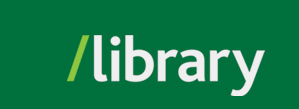
Mission SAR photo of smoke from ~100 stored RVs on fire during Sumas Prairie mid-November, 2021 flooding event--used with permission.
This guide has been developed as a general introduction to resources surround the November 2021 flood on the Sumas Prairie, Semá:th X_ó:tsa (the former Sumas Lake), historical flooding in the Fraser Valley, flood management, drainage and emergency planning. It is not a comprehensive listing of sources, but rather a starting point from which you can begin your research according to your information needs.
From November 14-16, 2021, a series of events led to the flooding of Sumas Prairie in the shape of the footprint of an ancient lake. The atmospheric river event and dike failures also led to the widespread failure of transportation systems throughout southwestern BC, severing connections between communities and cutting off the municipalities of Chilliwack and Hope and several Indigenous communities from the rest of the country. Sumas Prairie, Yarrow, sections of the Chilliwack River Valley, areas around Cultus Lake, the entire town of Merritt, population 7,000, and other areas in Southwestern BC were evacuated. Abbotsford and Hope declared local states of emergency, while the province declared a province-wide state of emergency and the federal government sent in the military to sandbag and construct a "tiger dam" across Highway 1. Travelers were stranded between landslides on Highway 7 between Hope and Agassiz, Highway 5 between Hope and Merritt, and livestock that couldn't be evacuated, drowned. The municipality of Hope recorded 252 mm of rainfall between November 13 and 15--a record-smashing amount. Abbotsford recorded 172 mm of rain, and Chilliwack recorded 219 mm, during the same November 13-15 time period, according to local news reports. In the ensuing days, schools throughout the region and the University of the Fraser Valley were closed and later classes moved online, Chilliwack ran out of food items and fuel, due mostly to panic buying, and the provincial government imposed fuel and travel restrictions to keep essential traffic moving. The Fraser Valley, which produces much of the dairy in the province, couldn't transport or process large quantities of milk and farmers were instructed to dump it, raising questions about food security. In a dramatic turn, the Barrowtown Pump Station was in danger of flooding and shutting down, an event which was predicted to cause catastrophic damage if Fraser River waters joined the Nooksack River in flooding Sumas Prairie. Volunteers sandbagged around the pump station through the night, November 16, buying time for the waters to recede. Throughout late November, three atmospheric rivers hit the region in rapid succession, flooding land that was increasingly saturated. Overall, Chilliwack and Abbotsford broke rainfall records. Canada's Top Weather Stories 2021.
Short on time? Just want to dive right in? Start here.
© , University of the Fraser Valley, 33844 King Road, Abbotsford, B.C., Canada V2S 7M8

